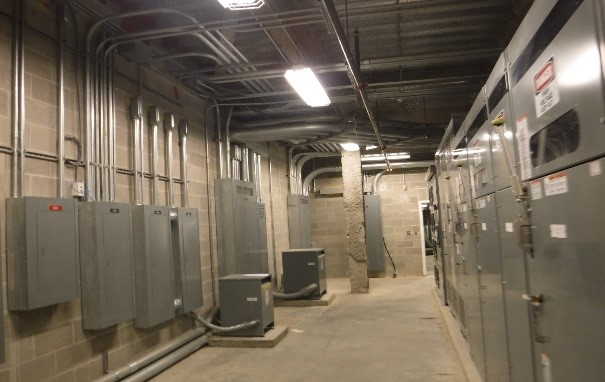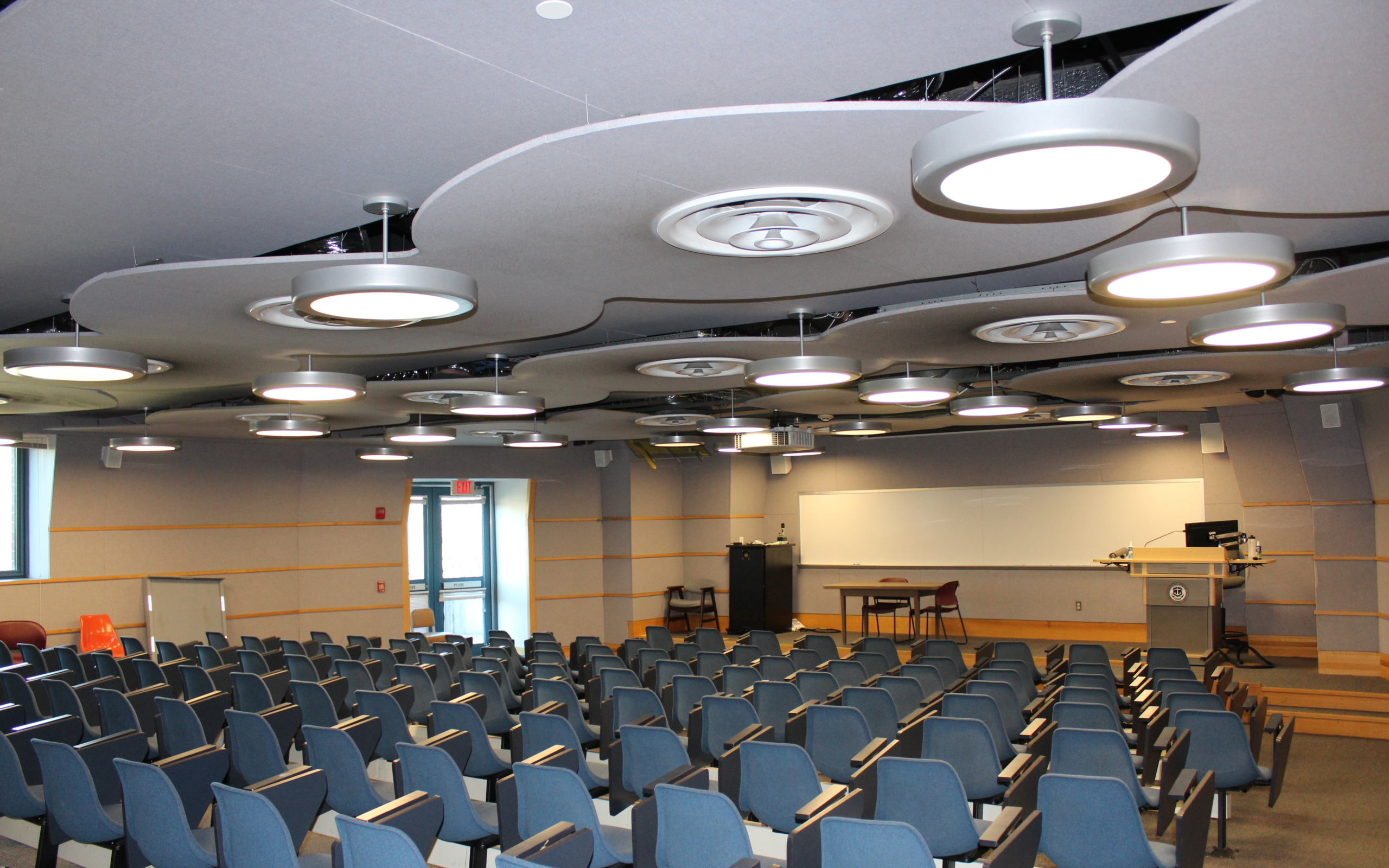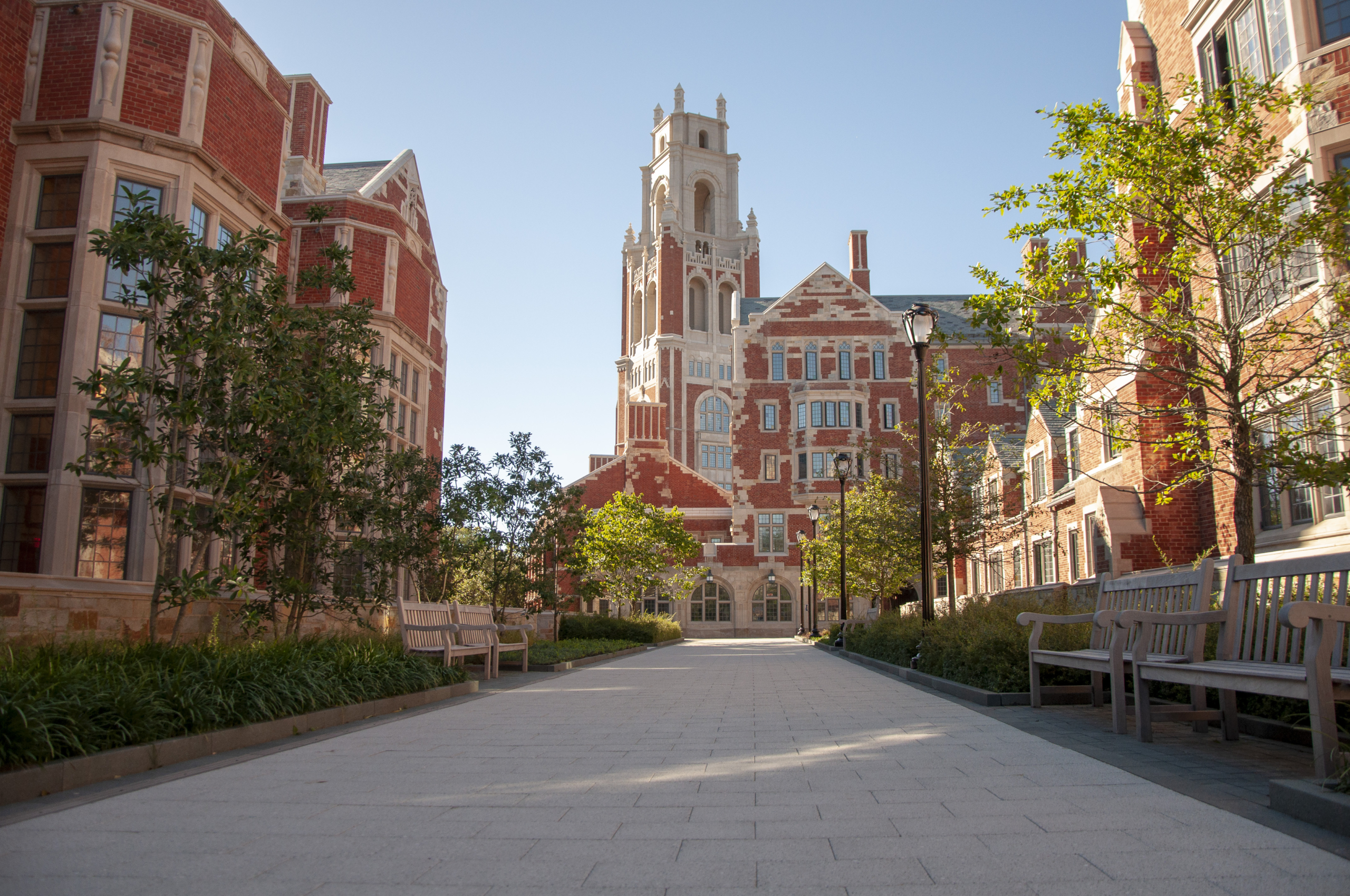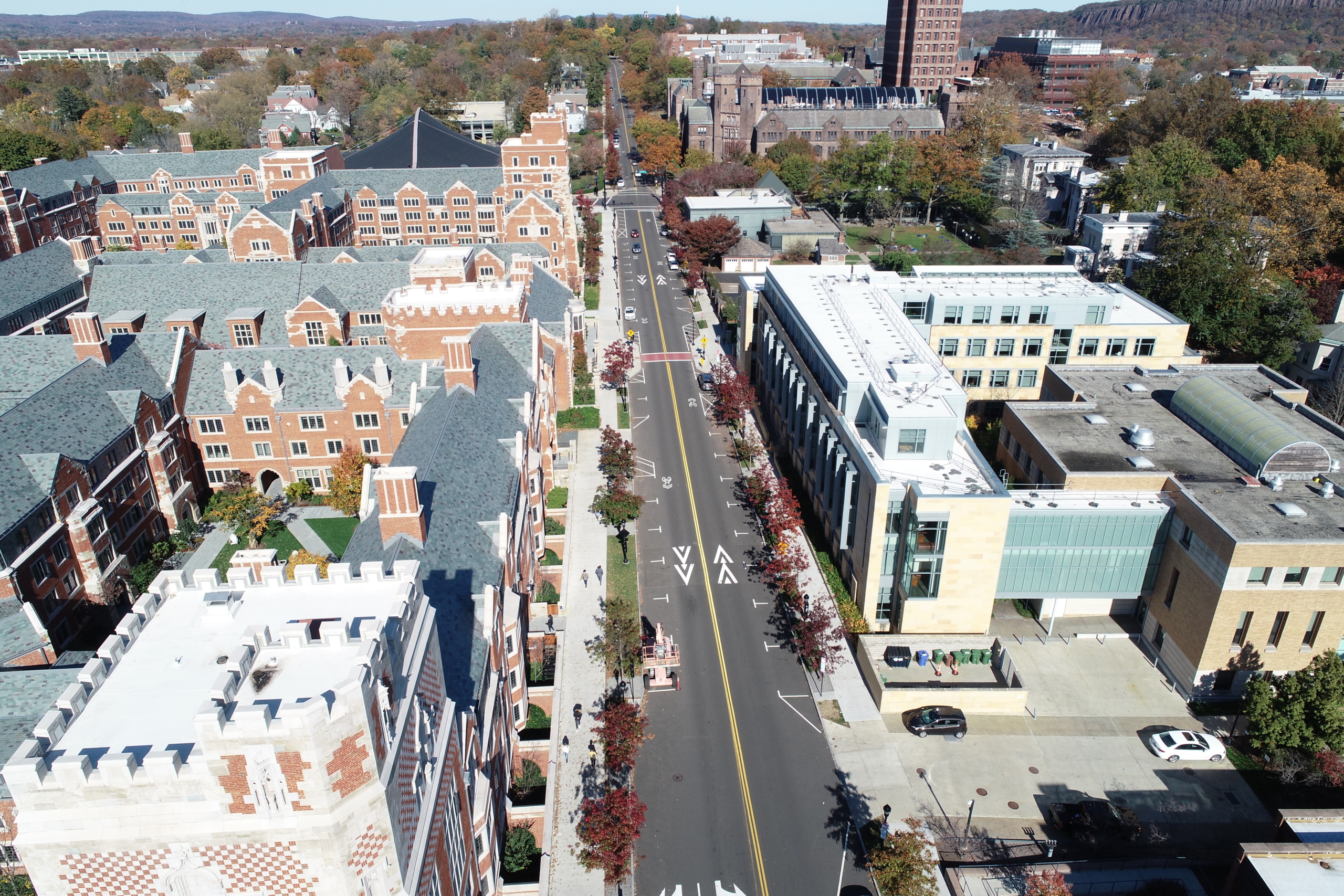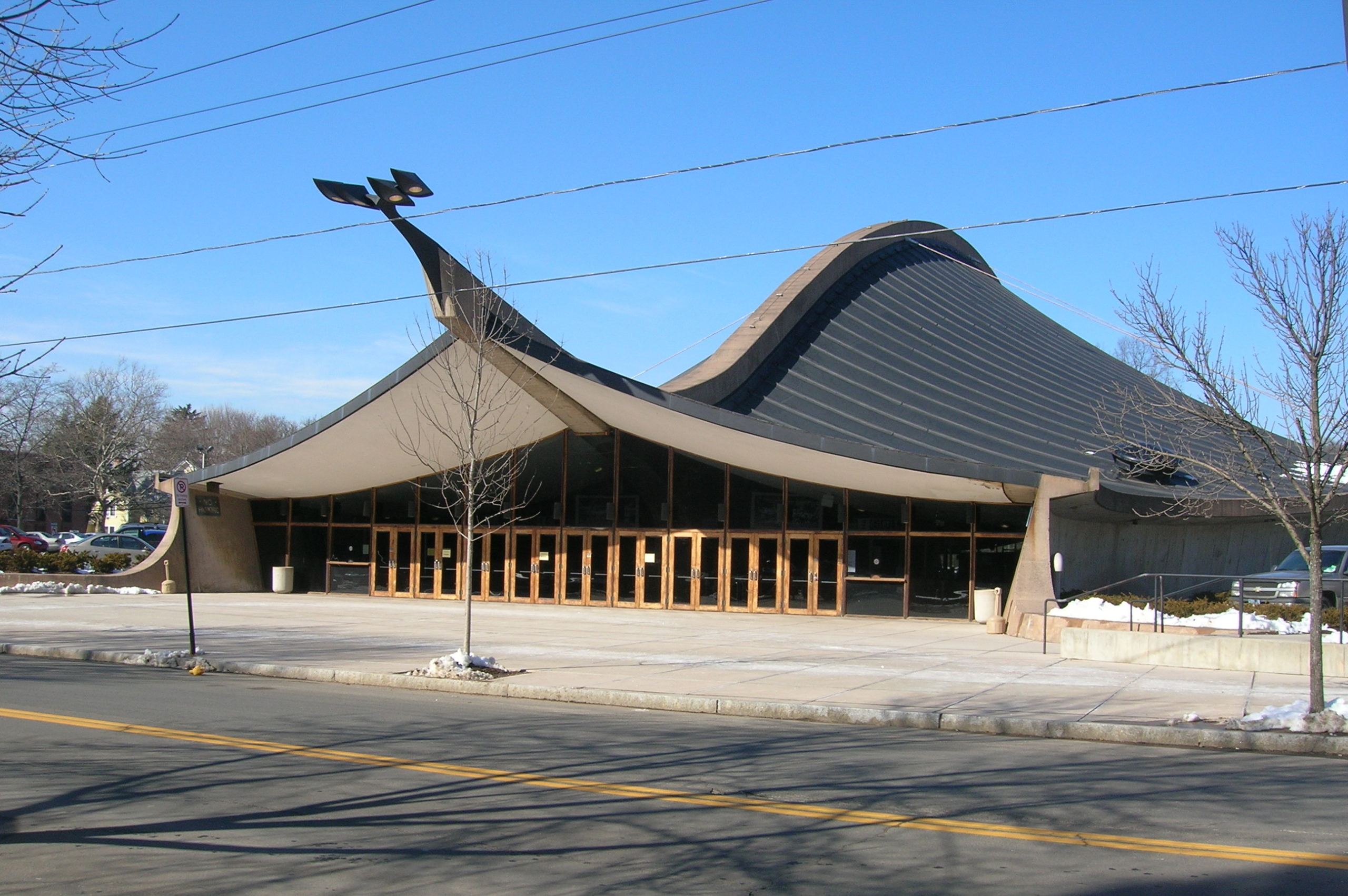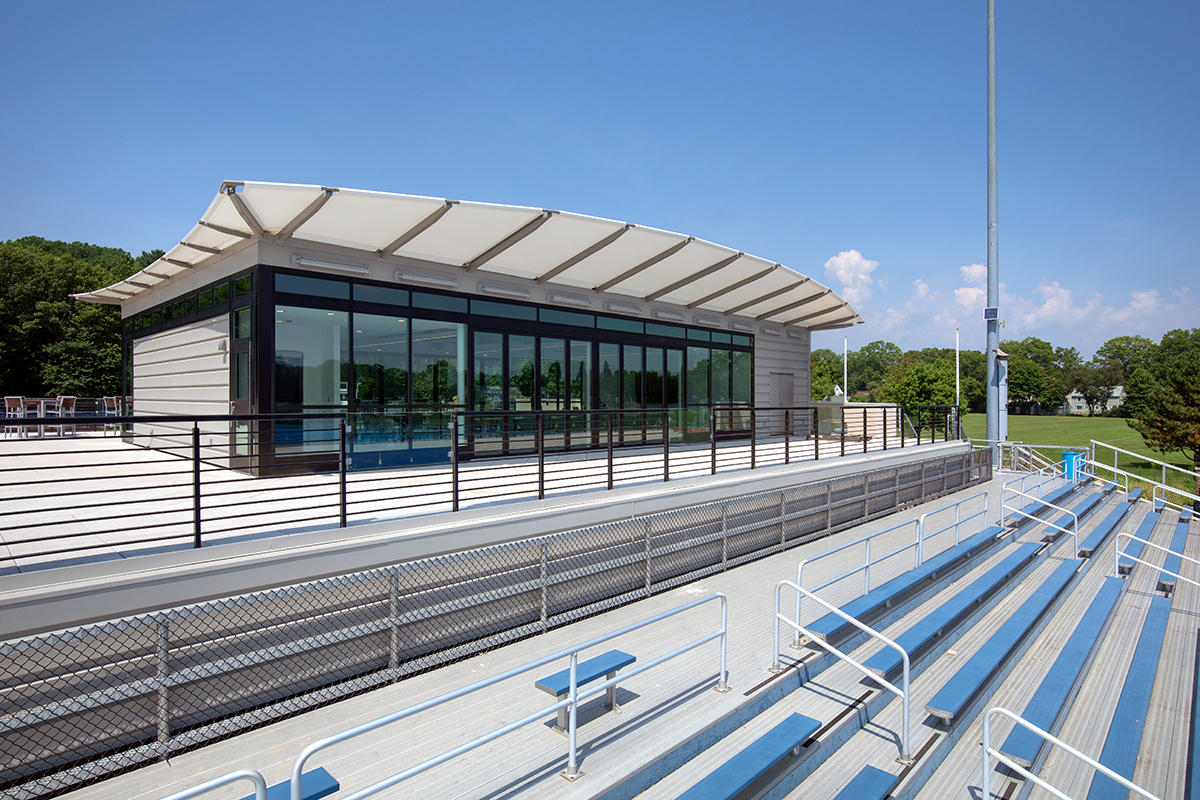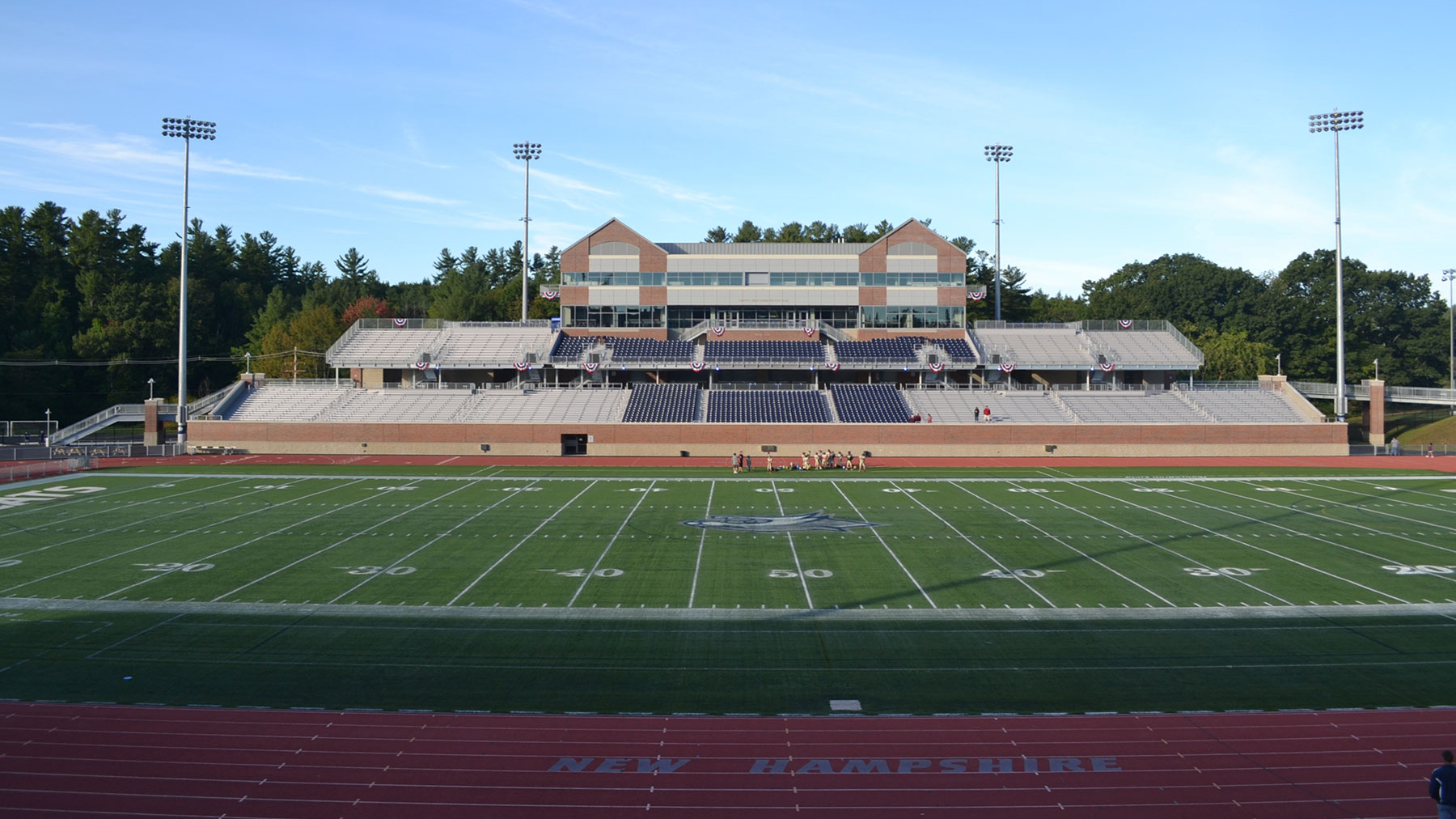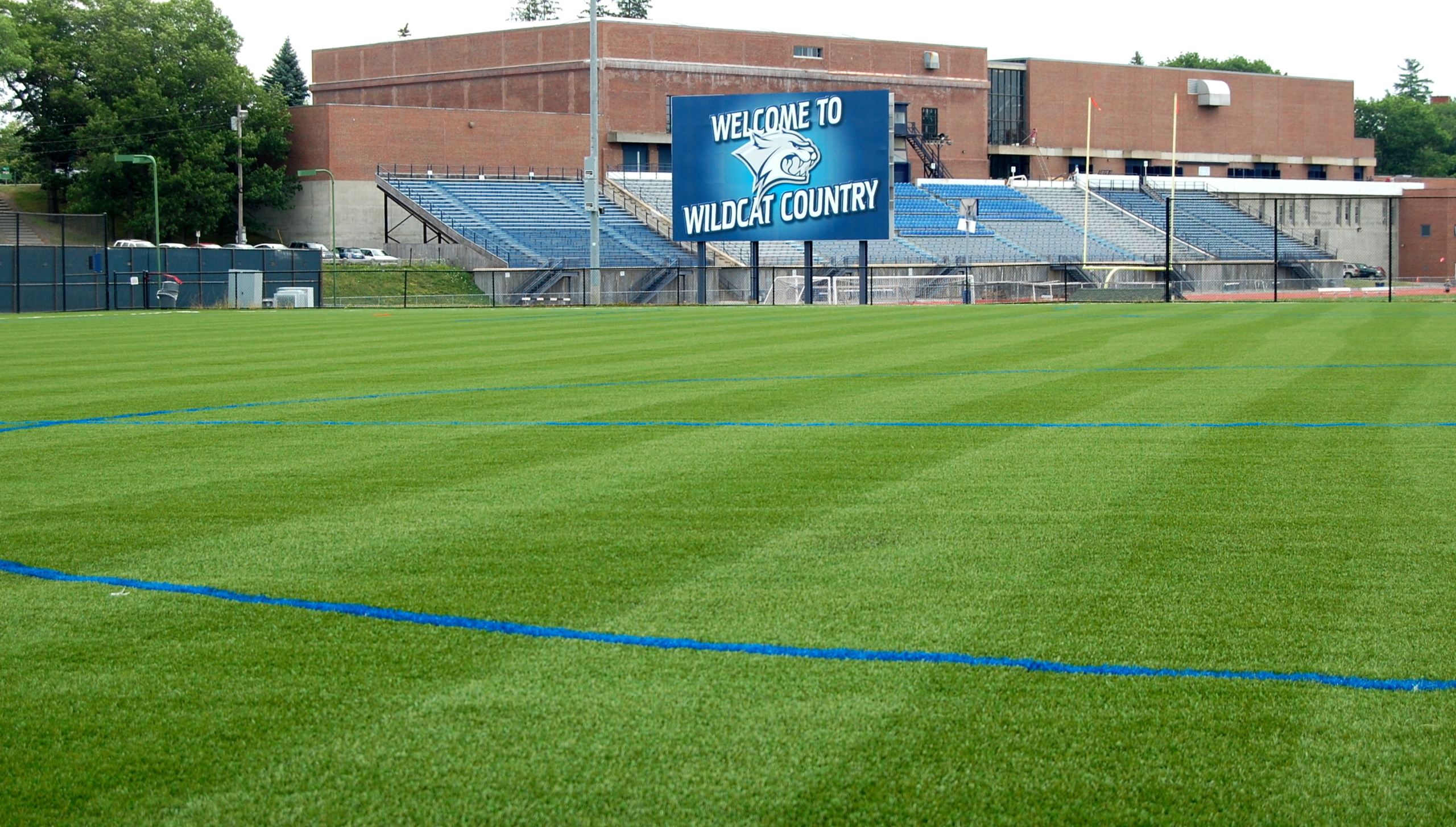University Work: Cutting-Edge Facilities, Fields & More
Across the Northeast, colleges, and universities are working to improve their facilities to integrate technological advances, be higher performing to reduce the use of fossil fuels and cut costs, and attract students with spaces that promote healthy learning, including improved indoor air quality. At the same time, they’re managing tight construction deadlines to minimize impact on their communities, as well as improving their infrastructure to accommodate growth.
Here are some recent examples of how we’re helping clients maintain and upgrade their campus buildings, athletic facilities, and infrastructure, like roadways and parking.
University of Rhode Island
White Hall College of Nursing HVAC Improvements Project
We are wrapping up our final design package to improve the heating, ventilation, and air conditioning (HVAC) systems at White Hall on URI’s main campus in Kingston, RI. Our team is providing mechanical, electrical, and structural engineering services, as well as performing a hazardous building material assessment. Architectural improvements were designed to accommodate the new HVAC system.
Currently, White Hall is heated, cooled, and ventilated by perimeter fan coil units. This is a two-pipe heating and cooling piping system that delivers either hot or chilled water to the fan coils, based on the season. Each fan coil unit brings in outdoor air through small louvers located on the exterior walls of the building. This type of system poses some challenges because it’s not possible to allow some spaces to be heated and cooled at the same time. For example, on a sunny day in the fall, the offices located on the southern exposure receiving direct sun may need to be cooled. Meanwhile, the offices located on the shaded north side may require heating. It’s also difficult to deliver tempered ventilation air to the space with fan coil units, which can cause building humidity issues.
In response to these challenges, we’re designing two new dedicated outdoor air systems (DOAS) that will deliver ventilation air to each space via overhead, ducted systems. The DOAS not only supplies air but exhausts air from the building. Energy is captured from the exhaust air stream and is transferred to the supply air, pretreating the ventilation air before it is heated or cooled by the building’s hot and chilled water piping system. This process reduces the heating and cooling energy needed to temper the ventilation air, reducing energy costs for the University. All fan coil units are being replaced, and the connection to the outdoor air louvers are being infilled.
We are also designing a new four-pipe system so both hot and chilled water will be available at all times to give each space the flexibility to either heat or cool, depending on the needs of the occupants. Our structural engineers designed new supports on the roof for the new DOAS units and framed openings through the existing concrete floors for new ductwork and piping penetrations. Our electrical engineers are designing electrical system improvements to accommodate the new HVAC equipment.
Addressing Engineering Needs Across the Campus
- A look at the work of our MEP team.
- One of the URI lecture halls where our team provided feasibility studies and engineering design.
White Hall is one of many projects the firm has worked on for URI since being selected for on-call mechanical, electrical, plumbing, and fire protection engineering services in 2016. As part of this on-call contract, Tighe & Bond provided feasibility studies and engineering design services for numerous projects for lecture halls, field houses, gymnasiums, laboratories, and an on-campus police station. During the COVID-19 pandemic, we performed several tasks to help prepare the university for returning faculty and students. This included performing an assessment of ventilation systems in several high-priority buildings across three campuses. We are in the initial stages of a new project at Fogarty Hall (also home to the RI State Crime Lab), where we are providing several services including mechanical, electrical, and structural engineering. Our team was also recently awarded a major MEP upgrades project for the 253,000-square-foot Robert L. Carothers Library.
Yale University
Benjamin Franklin and Pauli Murray Residential Colleges and Complete Streets
- Yale’s new Residential Colleges.
- An aerial view of the Residential Colleges and Complete Streets work.
Yale University has two new, LEED-Gold certified residential buildings, the first to be built in 56 years, and are part of a strategic effort to meet the needs of increasing enrollment. Dubbed the “Residential Colleges,” they house approximately 900 students in two, 230,000 square-foot Gothic-style buildings situated within the campus along Prospect St., Sachem St., and the Farmington Canal Heritage Trail in New Haven, CT. The Residential Colleges have seven interior courtyards and a major pedestrian way between the two buildings.
Tighe & Bond was retained to provide site/utility engineering, traffic engineering parking consultancy, and roadway design services associated with the Complete Streets improvements that were implemented as part of the comprehensive project scope. The engineers developed detailed site utility plans outlining the various utility services required to serve the proposed site, including storm, sanitary, water, fire protection, electrical, tel-data, steam, and chilled water. Stormwater drainage needs were addressed for all interior courtyards on site, designing an intricate drainage system through the complex layout of buildings that ensures stormwater flows into the adjacent city storm sewer system. Our engineers worked with the City of New Haven’s engineers and the Greater New Haven Water Pollution Control Authority to address a main sewer line running directly through the build site, conducting a sewer separation project, and finding a pathway through narrow corridors for the utilities needed for the residential buildings and other parts of the Yale campus.
We also brought in our traffic engineers to aid with compliance with the City of New Haven’s Complete Street design guidelines. Our engineers prepared the city’s first Complete Street project along Prospect Street to improve safety for all roadway users. The influx of new students into the Residential Colleges significantly increased bike and pedestrian traffic along Prospect Street, providing the impetus to implement the Complete Street elements into the design.
The Complete Streets elements of the project reduced Prospect Street from a four-lane arterial roadway to two lanes with on-street parking, curb bump-outs at a mid-block crosswalk, and speed tables to calm traffic on the approaches to the mid-block crossing. New electronic, pedestrian-actuated Rectangular Rapid Flashing Beacons (RRFBs), enhanced street lighting, and decorative pavement markings were utilized to define the proposed mid-block crosswalk. The segment of Prospect Street also features shared bike lanes; transit stops were strategically located to provide direct access for students to both Yale’s campus shuttle system and CTtransit’s regional bus system.
Expanding Athletic Facilities
- The historical “Yale Whale” rink.
- The glass-walled event space of the Carol Roberts Field House.
Within the Yale Athletics Complex, there are over a dozen athletic fields and facilities where teams practice and compete. To service these fields and facilities, Yale needed a new facility to serve as a hub for their maintenance operations. Tighe & Bond provided Yale with engineering, permitting, and construction administration services for the new Athletic Maintenance Building within the athletics complex. The scope of site engineering services included site layout and grading, site drainage, stormwater management and utility design, landscaping and lighting, and soil erosion and sedimentation control design.
Our team also provided property survey, site/civil engineering, environmental (wetlands), geotechnical, and structural engineering for the new Carol Roberts Field House within the Yale Athletics Complex. The 5,900-square-foot building houses locker rooms, training facilities, and coaches’ facilities for Yale’s field hockey and softball teams. The building also features a glass-walled event space, as well as a second-story observation deck that overlooks the softball field.
Tighe & Bond provided site/civil and traffic engineering services for the $23 million restoration and expansion of the David S. Ingalls Rink, one of the finest collegiate hockey facilities in the country. The “Yale Whale” was originally designed by Eero Saarinen in 1958 and is listed by the American Institute of Architects as a historically significant building. We helped obtain timely permit approvals, developed construction traffic management plans to minimize neighborhood disruption, assisted with risk assessment and contractor selection to contain site costs, and provided construction observation services for quality assurance.
University of New Hampshire
Campus Buildings and Athletic Facility Upgrades
- A look at just some of the seating in the expanded Wildcat Stadium.
- Bremner Field where our engineers addressed stormwater drainage issues.
Our site planning team has worked as part of the design team for several UNH athletic fields and facilities, including the renovation and expansion of the multi-sport Wildcat Stadium. The expansion put in new seating with a total capacity of 11,000, a new scoreboard, and concessions stands. The project team designed utility access as well as service, emergency, and pedestrian access for the facility. The main field of the stadium, Mooradian Field, needed replacement – the drainage issue needed a solution and settlement was causing what should have been a flatfield to have a “wavy” appearance. Through our investigations with our geotechnical engineers, we found the field was on top of marine clay, which needs to be kept dry. Our team developed a design solution that added a geotechnical-style fabric underneath the field. The team was able to stabilize the subgrade and wick water to a drainage system rather than allowing water to soak into the clay-heavy soils underneath.
At nearby Bremner Field our engineers conducted a field turf study to discover why their field was experiencing stormwater drainage issues. The investigation uncovered the field had improper installation under the turf and prevented water from draining. Our project team quickly pivoted from a more basic “peel and replace” turf renovation to a new drainage system design and turf replacement.
UNH’s field hockey team plays on the campus’ Memorial Field which has a short knap turf ideal for the sport, which needed replacement. To cut costs, our engineers were able to re-use an elastic sublayer or “E-layer”, which will continue to address drainage. We also designed an irrigation system to water down the field, a common practice in field hockey, which helps with ball roll and makes for faster play.
Most recently, in 2022, our engineers finished addressing the aging UNH tennis courts with a full replacement and the associated lighting.
Roadway, Parking, and Stormwater Improvements
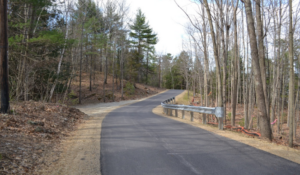
Key access road, Adams Point Road, provided a path to the University of New Hampshire’s Jackson Estuarine Laboratory.
To fulfill UNH’s desire to reduce stormwater runoff quantity and improve stormwater runoff quality, we designed a new, 140-vehicle porous asphalt parking lot for the Alumni Center and a permeable paver driveway and parking lot for the campus career and programs hub, Hood House. We also worked with UNH’s Stormwater Center to create a master plan for stormwater improvements along College Brook which flows through the heart of campus. These green infrastructure improvements were then implemented as part of capital improvement projects. This included the renovation and expansion of the College of Liberal Arts building, Hamilton Smith, and the College of Life Sciences and Agriculture building, Spaulding Hall, in connection with the university’s recent bioscience initiative.
Tighe & Bond also provided full design, permitting, and construction administration services for the reconstruction of Quad Way, an important residential thoroughfare, transportation, and utility corridor at the university. The reconstruction included utility upgrades including sewer, water, drainage, heating line, and telecommunications. Pedestrian improvements focused on new walkways and drainage improvements of the integral courtyards adjacent to and within the surrounding residential halls.
Adams Point Road serves as a key access to the University of New Hampshire’s Jackson Estuarine Laboratory, a critical research facility in the Great Bay Estuary. We performed a geotechnical investigation, design, permitting, and construction administration for the reconstruction of the 6,000 linear-foot roadway, which was in desperate need of repair due to the increased intensity of coastal storms and deferred maintenance. Adams Point Road also serves a New Hampshire Fish & Game (NHF&G) maintained boat launch and walking trails surrounding the Adams Point Wildlife Management Area.



